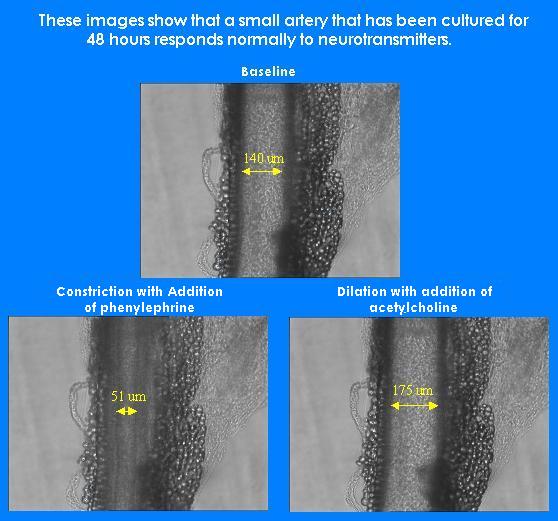Current Projects
Vascular Function in Disease States
Arterioles within a tissue contract and relax to control distribution of blood within the tissue. An increase in blood supply to a specific region of the tissue involves both local dilation of the arterioles within that region, as well as dilation that ascends up through the vascular branches to dilate the larger feed arteries external to the tissue. This ascending dilation occurs by electrical cell-to-cell communication through channels called gap junctions. We are interested in how these channels are regulated, particularly in conditions such as aging and hyperhomocysteinemia (conditions in which normal arteriole function is compromised). We use intravital microscopy to visualize the arteriole network within a living tissue and to measure the vascular responses. We also examine the expression of the proteins that comprise gap junctions using immuno-histochemistry, western blotting, and quantitative PCR.

Mechanisms of Vascular Remodeling in Aging and Disease States
Blood vessels alter their structure in response to physical forces (i.e., changes in blood pressure or flow), which is called vascular remodeling. We are interested in isolating the factors that influence remodeling, the genes that are involved, and how this process is altered in disease states and aging. We are using a model in which small arteries are isolated and cultured for several days. This allows us control over the physical forces and vasoactive substances to which the vessel is exposed.















